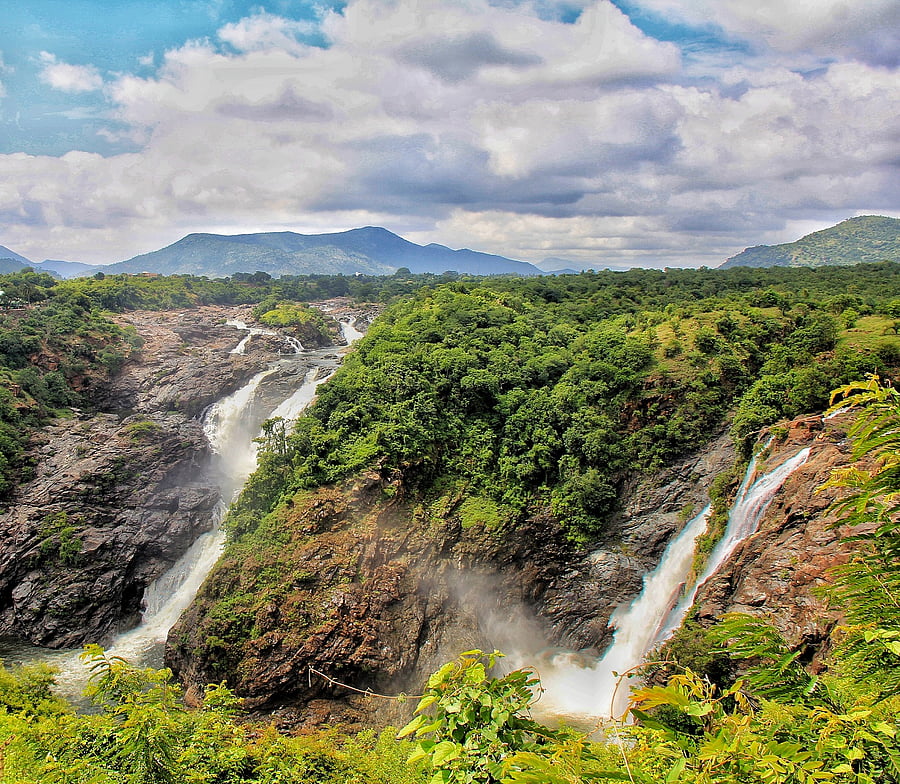Tourism brings cultures, cuisines and countries together, but a recent newspaper clip caught the attention of many — the locals of Shimla were pleading with tourists not to visit Shimla!
Depleting resources, excessive commercialisation, increase in waste output, impact on environment are serious concerns in most tourist spots across India. Tourism is not an organised industry in India, yet it is for many states the biggest source of revenue and job creation, and foreign tourist influx brings in much needed foreign exchange. Of course, we forget that local tourists are more numerous when it comes to religious tourism and hill stations are high on honeymoon tourism.
The lopsided tourism policies are focused on creating tourism infrastructure and seldom focus on making it more sustainable. These lopsided policies eventually are crumbling under their own weight as tourist spots are becoming crowded and, in turn, causing serious environmental and sustainability issues.
Be it untreated sewage let into the Ganga from the hotels in Gangotri, the garbage being thrown on top of Khardung-La, eateries cleaning meat at Balmuri Falls or hours of traffic jams due to a large number of visitors to Shivanasamudra, all tell the same story of bad policy decisions and even worse implementation.
Recently, the Karnataka Forest Department took a decision to restrict the number of trekkers, as the popular trekking routes like Kudremukh, Skandagiri, Kumaraparvatha are reeling under heaps of trash and witness a serious threat to flora and fauna. But, is that enough?
The forest and tourism departments work in silos, leading to more policy lapses and failure to create a holistic tourism policy.
Karnataka can offer tourism options round the year, blessed with beaches, wildlife, cycling, eco-tourism, safaris, trekking, rafting, temples, rock climbing, kayaking, scuba diving, sky diving, forts, monuments, hill stations, waterfalls, etc.
With good connectivity and accessibility, the IT state lives up to its tourism tagline ‘One State, Many Worlds’. But in the tourism department’s enthusiasm to emulate Kerala, Goa and Rajasthan, it is committing their mistakes, too — of policies devoid of sustainability. Today, over 30-40% of Karnataka’s tourist spots have reached the danger mark on the scale of impact on environment and sustainability.
Though Karnataka was one of the first states to ban all kinds of single-use plastic items fully, most tourist spots are an eyesore, with plastic items littered around.
Once in a while, these spots are cleaned, but the waste, along with plastics and disposables, are dumped into a nearby drain or burnt in open air. Waste water is let into streams and rivers without any thought for the impact it has in the long run. With rising footfall in some tourist spots, the impact on environment and resources is alarming.
Community-based
Does the state’s tourism policy even talk about waste management or treating waste water or low-emission transport? Does the state have a policy on making tourism sustainable? No! Any tourist spot that has an average of 100 tourists per day has to be considered a high inflow spot where infrastructure like hotels, toilets, eateries, souvenir stores need to be regulated and made fully complaint with a ‘sustainable tourism guideline’. Also, tourism must be developed as a community-based activity of which the beneficiaries are primarily the local communities, not the tourism department.
The tourism department must play the role of a facilitator, incubator and regulator, not that of an operator, thereby making tourism more community-based.
This can create direct employment for local communities and increase accountability in terms of sustainable tourism with checks and balances.
There is an argument that a focus on sustainable tourism could lead to lesser inflow of tourists. That argument is invalid. In the long-term, there is more to gain than lose from sustainability. It also throws up an opportunity to identify and develop more tourist spots. If the objective is to ensure that a foreign tourist spends an extra day in Karnataka, then there is a strong reason to offer more, clean, sustainable and ethical tourism options.
So, what can Karnataka Tourism do? One, redraft tourism policy to make it sustainability-centric; two, shift from being operator to facilitator, incubator and regulator; three, promote responsible tourism via community and operators; four, invest in resource development, low-emission transport, and not merely in building infrastructure; five, focus on maintenance, cleanliness and branding of tourist spots; six, market tourist spots, not facilities; seven, incubate operators and encourage them to create tourism circuits based on season; eight, keep each tourist spot off limits for at least 100 days in a year to reduce exploitation and help it recoup; nine, stay committed to environment-friendly tourism.
Sustainable tourism is the only way forward, footfalls cannot be the measure of success of tourism policy.
(The writer is Director, Basecamp Adventures)
